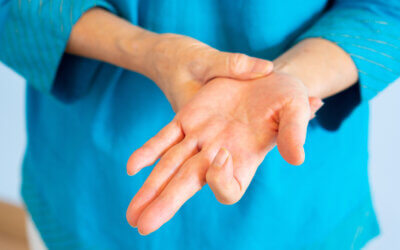Your body is amazing and allows you to run, jump, climb, create masterpieces and explore the world around you. However, sometimes things don’t work quite as smoothly as they should. Maybe you tweaked your ankle, or everyday tasks like getting dressed or cooking have become more challenging. This is where two incredible rehabilitation therapies come in — physical therapy (PT) and occupational therapy (OT). Both are dedicated to helping people regain their ability to function and live life to the fullest; however, the approach varies slightly. Let’s jump into the world of PT and OT and see how they can help you get back on your feet, literally and figuratively.
What is the difference between physical therapy and occupational therapy?
It can be a common mistake for physical therapy and occupational therapy to be confused for each other. While both PT and OT focus on helping people regain function, there are some key differences in their approach:
- Focus — Physical therapy focuses on the mechanics of movement, strength and coordination. Occupational therapy focuses on how you use those movements in activities of daily life.
- Conditions treated — Physical therapists typically work with people recovering from injuries, chronic conditions that affect movement like arthritis, and people who need post-surgical rehabilitation. Occupational therapists work with a wider range of people. They can work with children who have developmental delays, adults recovering from strokes or other neurological conditions, people with mental health conditions, or individuals who need assistance with activities of daily living due to injury or disability.
- Treatment techniques — Physical therapists use a lot of hands-on techniques and exercises to help people improve their physical abilities. Occupational therapists often incorporate strategies like adaptive equipment training, cognitive therapy and splinting to help people adapt and function in daily life.
Are there similarities between physical therapy and occupational therapy?
While there are several distinct differences, there are also some similarities between the two rehabilitation therapies:
- Goal — Both professions aim to help people regain their independence, improve their quality of life and participate fully in the activities they enjoy.
- Patient-centered care — Both PTs and OTs take a patient-centered approach. They listen to your needs and concerns to create a personalized treatment plan.
- Communication and education — OTs and PTs emphasize communication and education. They take extra care to teach you the exercises and techniques you need to continue your recovery at home. It’s important to do exercises or use techniques as directed to get the best benefit and ensure your safety.
What does a physical therapist do?
Physical therapists can wear many hats. Here are some of the things they can help you with:
- Injury recovery.
- Pain management.
- Balance training.
- Post-surgical rehabilitation.
- Neurological conditions.
- Sports physical therapy.
When is physical therapy needed?
If you’re experiencing any of the following, you may benefit from physical therapy.
- Pain in your muscles, joints or bones — From a dull ache to a sharp pain to a burning sensation, physical therapy can help. A physical therapist can find the source of your pain and create a personalized treatment plan to address it. This plan may involve manual therapy techniques to improve mobility and reduce pain, therapeutic exercises to strengthen the muscles and tissue around the affected area, or other modalities like electrical stimulation to manage pain and promote healing.
- Difficulty moving due to injury, surgery or chronic condition — Injuries, surgeries and chronic conditions can significantly limit your mobility. PT can help you regain strength, flexibility and range of motion in the affected area. A physical therapist can design a safe and effective exercise program tailored to your specific needs. This program may focus on strengthening weakened muscles, improving flexibility to prevent stiffness and restoring your full range of motion. Your therapist can also teach you proper movement patterns to help prevent future injuries and ensure that you’re using body mechanics safely and efficiently.
- Balance problems and risk of falls — Falls are a serious concern, especially for older adults or people with certain medical conditions. If you have a balance problem or feel unsteady on your feet, PT can be helpful. A physical therapist can assess your balance risk factors like muscle weakness, joint stiffness and inner ear problems. They’ll develop a program specifically designed to improve your stability and coordination. Improved balance can significantly reduce your risk of falling and help you maintain your independence.
What does an occupational therapist do?
Occupational therapists can help you with a wide range of challenges, including:
- Learning or relearning how to do activities of daily living like dressing, bathing and cooking.
- Managing pain and improving your ability to function with chronic conditions.
- Overcoming developmental delays and learning new skills.
- Developing coping mechanisms and strategies for mental health conditions.
- Using adaptive equipment to stay active.
When is occupational therapy needed?
Some situations where OT can be beneficial include:
- Pediatric care — Children with developmental delays may struggle with basic skills like dressing, eating and handwriting. Occupational therapists can work with children and their families to develop strategies and routines that help promote independence and participation in daily activities.
- Stroke recovery — A stroke can affect a person’s ability to move, speak and think. OTs can help stroke survivors relearn basic skills like getting dressed, bathing and preparing meals. They can also work on cognitive impairments like memory problems and difficulty concentrating.
- Mental health conditions — Mental health conditions like depression or anxiety can make it difficult to complete daily tasks. OTs can help people develop healthy coping mechanisms and routines to better manage their symptoms and improve their overall well-being.
- Activities of daily living — If you have an injury, disability or chronic condition that makes it hard to do daily activities like dressing, bathing or cooking, an occupational therapist can help you find ways to adapt and keep your independence. They can teach you how to use assistive devices, modify your home environment and develop strategies for managing your condition.
- Sensory processing disorders — Children with sensory processing disorders may have trouble processing sensory information from their environment, which can make it challenging for them to participate in everyday activities. OTs can use specialized activities and techniques to help these children regulate their nervous system and better understand sensory stimuli.
The power of teamwork: Combining occupational therapy and physical therapy
Physical and occupational therapists can collaborate to create a comprehensive treatment plan for you. For example, imagine you’re recovering from a hip replacement surgery. A physical therapist may help you rebuild strength and flexibility in your muscles. An occupational therapist can teach you how to safely use a walker or shower chair and navigate your home environment with more ease. This teamwork can help ensure a smoother recovery and help you regain independence faster.
How to know which therapy is right for you
The best way to determine if you need PT, OT or a combination of both is to talk to your doctor. They can assess your specific needs and recommend the most appropriate course of treatment. Some additional tips to help you decide include:
- Be clear about your goals — What do you hope to achieve through therapy? Do you want to regain strength and mobility after surgery? Are you looking for help managing daily activities due to a chronic condition? Knowing your goals can help your doctor determine the right type of therapy.
- Ask questions — Don’t hesitate to ask your doctor about PT, OT or other treatment options you may be considering. The more informed you are, the better equipped you’ll be to make decisions about your care.
- Consider a team approach — Physical and occupational therapists can work together. If your situation requires addressing both physical limitations and challenges with daily activities, a team approach may be the best option for a well-rounded recovery plan.
Continuum Wellness can be your partner on your journey to well-being
At Continuum Wellness, we understand the path to well-being is a journey. We offer a compassionate and comprehensive approach to health care, offering both physical therapy and occupational therapy. Our experienced and dedicated therapists use a wide range of evidence-based techniques to help address a variety of issues. Our goal is to help you reach your full potential. Whether you are recovering from an injury, managing a chronic condition or simply looking to improve your daily function, we want to help you get back on track and move toward a healthier future.
Call us or request an appointment today for your physical therapy or occupational therapy needs.



